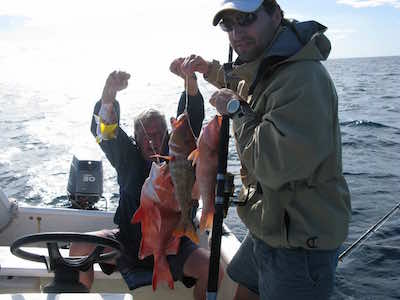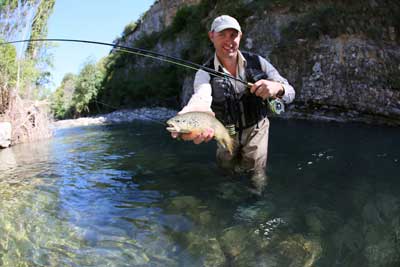Fishing Tackle – Lines

How often should I change my fishing line?
A lot of factors can determine when’s the best time to change your line. Obviously you will have no need to change your line every month if you only fish once a year.
Clear and unobstructed water will mean you generally need to change your line less often than in rocky shoals. Larger catches will put more stress on your line than smaller catches and different techniques of casting and luring will result in more and less wear and tear.
If you are headed into any kind of official sport, I highly recommend changing before each key tournament.
Anytime a big struggle occurs or your line gets snagged, run several feet of the line out and carefully inspect for any spots at all, including nicks, cuts, frayed line, rough spots, etc.
Anytime you find even a slightly questionable spot it’s best to just go ahead and cut it out because it may end up saving you a catch.
Why quality is important
The lure, weight and leaders are all attached to the line, making the fishing line one of the most important pieces of tackle. High quality lures, leaders, weights and baits mean nothing if you’re using a low quality line.
Cheap lines easily snarl and snag and can cause a lure to act in ways that will make catching a trophy bass difficult.
Some line characteristics will work very well in some conditions and with some fish and very poorly in other conditions and with other fish.
Knowing what to buy – Fishing line terms explained
Test Strength
This is the weight that a line will break when under pressure. It’s quite common for a line to actually break some 10 to 30 percent higher than the rated test.
Note: The tested rating is for a dry line. Water weakens the line and reduces the test.
Since your line will be in water most of the time, be sure to compensate with a test strength about 20% higher than required.
Line Class
World class records are measured in class lines rather than test strength. To qualify for a line class, the line must break at or below the line class. Lines that are labelled this way will show, “8KG class,” or “IGFA 16 lbs.”
Diameter
In order to avoid a lot of techno babble, let’s begin with a general assumption: the smaller the diameter, the better. This means that the line’s strength or pound-test is designed to hold the indicated weight before it breaks.
For example, 2lb test has been rated to hold a 2lb fish before it breaks. Novice anglers should buy the line that meets the size of the fish they want to catch.
Density
Density affects the line’s responsiveness, sinking rate and the line’s weight. Specific gravity is often used as a way to express density. However, there’s a difference between fresh water and salt water.
Saltwater has a specific gravity of 1.025 while freshwater has a specific gravity of 1.0. Items less than 1 are lighter than water.
Most monofilament lines have a specific gravity ranging from 7.9 to 8.88.
Essentially, the important fact to consider here is that the higher the number, the heavier the line.
Visibility
This is an interesting attribute. Lines should be invisible to the fish, but not the angler and monofilament nylon makes lines virtually invisible when wet.
However we then saw the neon glowing line that helps anglers see the line and avoid entanglement, and yet it’s not visible to the fish. Due to a bunch of physics, which we’ll not go into, light “falls off” the deeper into water it goes and does so more rapidly in murky water.
On most occasions, the line color won’t be visible below about 4 feet in clear water.
Fluorocarbon line comes closest to the refractive index of water, so it becomes virtually invisible under water but is visible above the surface.
Fishing line flexibility
Flexibility refers to the limpness of a line.
Lines that are more limp are great for catching smaller fish as they provide greater flexibility, such as when fishing for Roanoke Bass.
However, when fishing for larger fish, reduced softness is required or it can lead to the line stretching and eventually breaking.
Color
Sometimes you need to see your line, other times you don’t want the fish to see the line. You can buy line that suits each one of these objectives.
Clear/Blue Fluorescent: sunlight illuminates the line above the surface so it’s easier to see when casting, retrieving or trolling, yet under the surface, the line stays clear so it’s nearly invisible to a fish.
Low-Visibility: this blends into most underwater environments so it’s good in situations where the fishing is tougher either because they don’t seem to want to bite or heavy fishing has made the fish a little smarter.
Low-Visibility Clear:use this color in clear streams or even in some lakes, where the water runs clear. It works well in ultra-clear water or when you know the fishing hole you have selected tends to have fish that seem unwilling to bite.
High-Visibility Gold: this makes it easier to see when a fish strikes or to watch your line position when you troll several lines or go fishing in a current. Use gold for low-light conditions such as dawn, dusk and night.
Coffee:works well in muddy, stained waters.
Moss Green: works well in waters with heavy vegetation or algae.
Shock Resistance
Also known as impact resistance. Shock resistance is the measure of a line to withstand sudden, violent stress loads. The class or test of a line is a measure against a continuous load.
For example, a 30lb test line can sustain the load of 30 pounds, but it may not withstand a sudden impact from a fast biting 20lb fish.
- The more stretch a line has, the greater its ability to withstand a sudden load.
Note: Stretchy lines may not work well when catching larger fish. In these conditions, set the drag low so that the line takes less of a sudden jolt on a fast strike.
Abrasion Resistance
Even fishing for small bass can put a fishing line through harsh conditions. Rocks, tree stumps, not to mention the weather, or wear on the line. For abrasive environments use a line that can withstand scuffing nicks and the normal wear-and-tear from repeated casting.
Most premium lines offer good abrasion resistance with modern monofilaments being designed to improve abrasion resistance in extreme fishing conditions.
Knot Strength
Simply put, adding a knot to a line weakens the line. Some lines are weakened more than others. Fluorocarbon lines have significantly poor knot strength and also fail due to high memory characteristics.
As a rule, monofilament lines have poor knot strength despite having improved greatly over the past 70 years since it was created.
Durability
Durability is pretty much the summary of all of the above line characteristics.
We recommend careful consideration of all aspects of your tackle and the best way to pick the right components and component characteristics is to know your prey well. No single line is perfect for all conditions.




